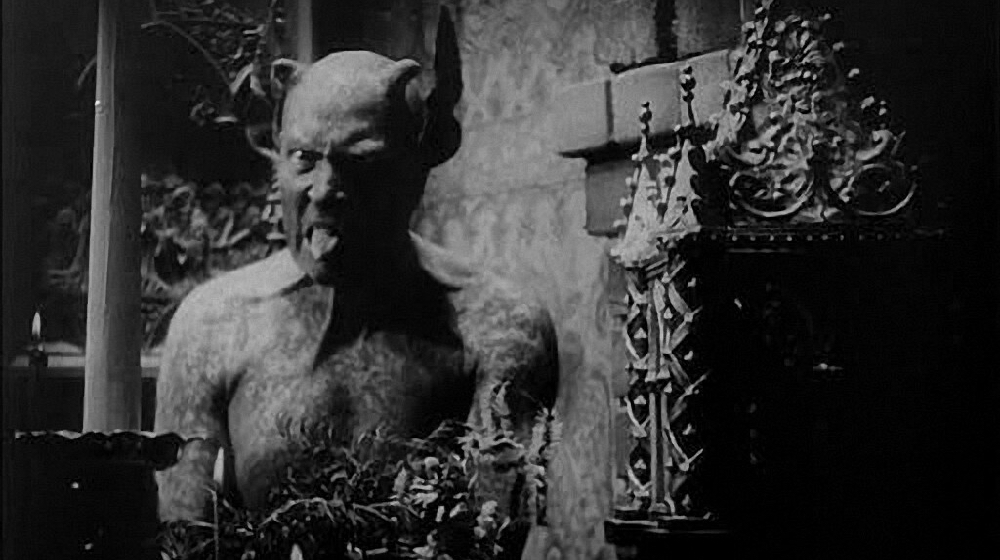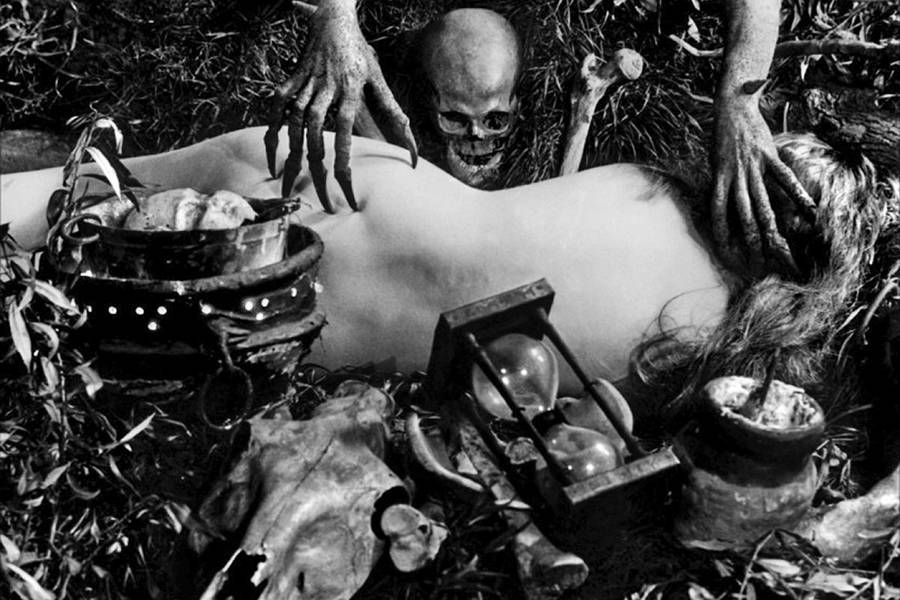Poor Little Hysterical Witch!
“To me, a witch is a woman that is capable of letting her intuition take hold of her actions, that communes with her environment, that isn’t afraid of facing challenges.”
Paulo Coelho
I promise myself—because no one else reads this—that I won’t spend every post lambasting religion. But, again, watched a film last night that set me to seething about its subject matter, of which religion is a prime focus.
That film: Häxan: Witchcraft Through the Ages.
Häxan is a 1922 documentary/fantasy film directed by Benjamin Christensen that seeks to educate us on the history and plight of the Witch, from the dawn of time up until the then modern years.
Häxan has long been a part of the esteemed Criterion Collection, and is painstakingly restored via an impressive 2K restoration process and presented on Blu Ray with a handful of features.
This to say, it’s a film considered by many to be valuable in the cinematic canon. However, as the film settled into itself—and it’s not until part two that actual actor performances begin—I often found myself laughing at the film. Quite mockingly in fact. It feels campy, and the subject matter being quite far removed from our current time struck me as rather goofy. That was until I remembered: holy shit, this is a documentary. This isn’t meant to be comical farce. This is meant to explore the history and reality of the witch and her plight.
It was then that the severity of what we were watching set in. This is exposing centuries of barbaric mistreatment and misogyny toward women, predominantly at the behest of the Church.
For a woman to be labeled, tried, condemned and executed as a witch required scarcely anything beyond her being, say, old and ugly, or perhaps young and pretty—leaving a completely subjective and hazy line for any female to toe. All it took was someone’s accusation.
If merely called a witch, a woman was removed from her home and essentially tortured to the point of either admitting to things she’s never done just to stop the barbarism, or for the few strong of will, being punished for their refusal to confess.
Being accused—quite frankly by any fucking person in town—of witchcraft was a death sentence. The only question being how long and how painful the remaining moments of her life would be.
The implements of torture of the day were seemingly endless. Which brings me to wonder, who the fuck sits around and comes up with these methods and devices of torture. Apparently frightened, entitled men of “faith.”
In one scene in the film, Christensen uses artwork of the period and title cards to demonstrate one method of torture in which a woman would be bound at her hands and feet, like a cowboy might tie a hog, and then thrown into whatever body of water was nearby. Priests with long oars would ensure the woman remained face down. If she were to die and sink, meaning she was not a witch, the priests would praise their god for her soul having been saved. If she refused to sink, meaning obviously she’s a witch, she would be removed and burned at the stake.
In another scene, this time with performers, Christensen takes us on a tour of what it might look like, from start to finish, for a woman to be declared a witch and thusly dealt with. In this scene, a young woman’s husband has fallen ill. We learn that he had grown dizzy, and the most logical of conclusions for this malady was that the poor man was cursed by a witch—certainly it couldn’t have been that he worked hard in the midday sun and failed to hydrate. Or, happened to catch whatever fucking other myriad sickness of that day that essentially ate life away from millions.
Nope. Had to be a witch.
As Fate would have it a poor and elderly woman comes to their home and asks for something to eat. The young lady provides food, but is perturbed by the old woman’s wrinkles and deep set eyes. Certainly this is her witch. Long and short, church men take her away and torture her to the point of confession and dispatch of her as well as all the other women she was forced to name. Irony of ironies, the young woman who set this all in motion…she was named a witch by the old lady and she as well was dispatched accordingly.
What I find compelling about his film is how it illustrates a subject I’ve long been drawn to, that being what I refer to as the Fear and Myth of the Other. Be that Other race, gender, creed, sexuality geography, age, etc. those unlike us become ever so easily subjected to our prejudices, and as this film explores, have for centuries upon centuries now.
Perhaps the fear of Otherness is simply an inherent human trait. I personally don’t like that idea at all. I find life far more flavorful and exciting because there are so many not like me. How and why so many are scared of different cultures and ideas is beyond me, and also grossly fascinates me.
Theistic religions are at their core an exclusive ideology. You’re either of their ilk, or you’re not; you’re an infidel. Most of these religions seek to allay that Otherness via proselytizing; through conversion. But make no mistake, if the Other does not become like them, they’re useless to them. (Again, even I admit that I know many religious folk—be they Christian, Muslim, etc—that aren’t awful, racist, sexist, homophobic, misogynistic people…but they’re exceptions to the rule.)
Ultimately with the benefit of decades of hindsight, we learn that what men and women of the times of the Middle Ages called a witch was often no more than a widower or a young woman who’d not found a husband, or sadly, perhaps a woman born with a mental or physical malady. The true crime? These women were not only shunned by their community, but destroyed by it.
Here we are in the Common Era year of 2020, and while we may not drag women from their homes to test their buoyancy before burning them at the stake, we still don’t universally treat them as equals. Women are still blamed for their own assaults, be those random or domestic partnerships. If not blamed, certainly they are held to bear the burden of proof. Women are still assumed to be the homemaker and the caretaker. They’re still expected to leave their pursuits and desires behind to nurture their family; whereas, a man should be just as willing and capable.

As Coelho alludes above, the witches of our day aren’t covered in ointment and licking the asshole of the devil in a cemetery any more than they were in the days of the Salem trials. Witches then and now are simply women with more desire in their heart for their own growth and strength than that of subservience and the fortitude to pursue anything otherwise.
And it’s only feeble little men—commonly shrouded in “the cloth"—that are frightened by that notion.
“Poor little hysterical witch! In the middle ages you were in conflict with the church. Now it is with the law.”
— Häxan
